Unsightly tooth stains can cause great embarrassment and keep people from smiling. Usually, as age progresses, the teeth tend to become yellow, which is normal. However, certain factors can cause changes as well. 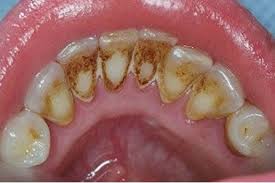 There are two types of tooth stains: extrinsic stains or surface stains and intrinsic stains when the interior sections of the tooth have darkened. Coffee, tea, soda, red
There are two types of tooth stains: extrinsic stains or surface stains and intrinsic stains when the interior sections of the tooth have darkened. Coffee, tea, soda, red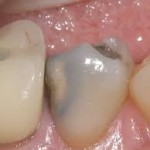 wine, curries, turmeric or even soy sauce can cause extrinsic tooth stains when consumed over a long period of time.Bad oral hygiene and smoking too can greatly discolour teeth. Intrinsic stains can be caused by certain drugs, some mouthwashes, dental fluorosis, large silver fillings or trauma too can cause discoloration which is the result of a dead nerve. Depending upon the cause of the discoloration, your dentist may advise a treatment which can vary from changing oral habits,
wine, curries, turmeric or even soy sauce can cause extrinsic tooth stains when consumed over a long period of time.Bad oral hygiene and smoking too can greatly discolour teeth. Intrinsic stains can be caused by certain drugs, some mouthwashes, dental fluorosis, large silver fillings or trauma too can cause discoloration which is the result of a dead nerve. Depending upon the cause of the discoloration, your dentist may advise a treatment which can vary from changing oral habits, 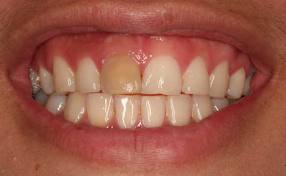 ultrasonic cleaning, teeth whitening, tooth coloured fillings or porcelain veneers.
ultrasonic cleaning, teeth whitening, tooth coloured fillings or porcelain veneers.
Supernumerary Teeth
Supernumerary teeth or Hyperdontia is the condition of having teeth that appear in addition to the regular number of teeth. They can appear in any area of the dental arch and can affect any dental organ. Depending upon the position of the tooth, supernumerary teeth can be classified as: Mesiodens (most common), Paramolars or Distomolars (rare). Supernumerary teeth d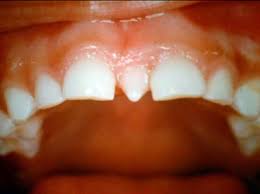 o not cause any harm, but they may delay eruption of nearby teeth or cause other dental or orthodontic problems. Dental X-rays are often used to diagnose hyperdontia. Extraction of such teeth is a mode of treatment if they are unslighty to the patient. If not, they can be retained in the mouth but oral hygiene must be meticulously maintained.
o not cause any harm, but they may delay eruption of nearby teeth or cause other dental or orthodontic problems. Dental X-rays are often used to diagnose hyperdontia. Extraction of such teeth is a mode of treatment if they are unslighty to the patient. If not, they can be retained in the mouth but oral hygiene must be meticulously maintained.
Minimally Invasive Dentistry
The goal of minimally invasive dentistry, or microdentistry as it is sometimes called, is to conserve healthy tooth structure. It focuses on prevention, remineralisation and minimal dentist intervention. Minimally invasive dentistry allows dentists to perform the least amount of dentistry needed while never removing more of the tooth structure than is required, to restore teeth to their normal condition. In addition, dentists use long-lasting dental materials that conserve the maximum tooth structure so that the need for future repairs is reduced. First the dentist determines your risk of tooth decay after which he can strategize on how to prevent or reduce this risk. The techniques involved can include remineralisation using fluoride, air abrasion using a stream of air combined with a super-fine abrasive powder, sealants which seal the deep grooves, inlays or onlays which require less tooth removal than crowns, or bite splint for people who grind their teeth.
Peg-shaped Laterals
Peg lateral teeth, or peg lateral incisors, are terms used to describe a condition where the lateral incisors (the second tooth on either side of the front teeth) are undersized, conical and appear smaller than normal. This situation occurs when the permanent lateral incisors do not fully develop. Since peg lateral incisors are undersized, many times there will be a space between them and the adjacent teeth (this space normally would have been occupied by a fully developed lateral incisor).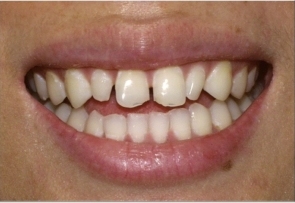 This resultant space the smile to appear abnormal. There are several ways to treat and correct this condition. Porcelain veneers are the most common treatment for peg lateral incisors, and require little or no tooth preparation. A porcelain shell is simply bonded over the smaller peg laterals making the teeth appear normal in size. If not enough space exists, it can be created by orthodontic treatment.
This resultant space the smile to appear abnormal. There are several ways to treat and correct this condition. Porcelain veneers are the most common treatment for peg lateral incisors, and require little or no tooth preparation. A porcelain shell is simply bonded over the smaller peg laterals making the teeth appear normal in size. If not enough space exists, it can be created by orthodontic treatment.
Tooth Mamelons
When your child’s permanent central teeth erupt, you may notice, on the top of the teeth, the incisal/biting edges, has bumps. These bumps are called tooth mamelons. Tooth mamelons vary from patient to patient. Some are very prominent and some look like the too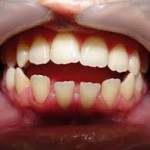 th has an indentation.The edges are rough and make the teeth look uneven. Mamelons are usually seen on the upper and lower, permanent central and lateral incisors. Some parents may be concerned when they see the permanent teeth because they think the tooth is damaged. However, such teeth should not be a cause for concern at all as it is a normal phenomenon. These are not seen in adults as these mamelons wear away with use.
th has an indentation.The edges are rough and make the teeth look uneven. Mamelons are usually seen on the upper and lower, permanent central and lateral incisors. Some parents may be concerned when they see the permanent teeth because they think the tooth is damaged. However, such teeth should not be a cause for concern at all as it is a normal phenomenon. These are not seen in adults as these mamelons wear away with use.
Ugly Duckling Phase
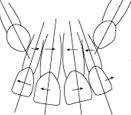 The ugly duckling stage, occurs during the mixed dentition phase (when both milk and permanent teeth are present in the mouth) of tooth eruption between the ages of 7-12 years. It is a stage of dental development that occurs during the eruption of the permanent canine, in which the lateral incisors become tilted because the erupting canines impinge on the roots of the incisors.
The ugly duckling stage, occurs during the mixed dentition phase (when both milk and permanent teeth are present in the mouth) of tooth eruption between the ages of 7-12 years. It is a stage of dental development that occurs during the eruption of the permanent canine, in which the lateral incisors become tilted because the erupting canines impinge on the roots of the incisors.  It is called ugly duckling stage because dentition in children at this stage looks very ugly due to multiple spacing between their teeth. This is a self-correcting condition and requires no treatment or cause for concern. However, check-ups at regular intervals is necessary to rule out the possibility of crowding and if crowding is suspected, growth modification appliances can be prescribed by the dentist.
It is called ugly duckling stage because dentition in children at this stage looks very ugly due to multiple spacing between their teeth. This is a self-correcting condition and requires no treatment or cause for concern. However, check-ups at regular intervals is necessary to rule out the possibility of crowding and if crowding is suspected, growth modification appliances can be prescribed by the dentist.
Diabetes and oral Health
Diabetes is a disease that can affect the whole body, including your mouth. Dental care is particularly important for people with diabetes because they face a higher than normal risk of oral health problems. This is because uncontrolled diabetes impairs white blood cells, which are the body’s main defense against bacterial infections that can occur in the mouth. People with diabetes face a higher risk of dry mouth, swelling of gums/periodontitis, poor healing of oral tissues or even burning mouth and/or tongue. People with diabetes who smoke are at even a higher risk — up to 20 times more likely than nonsmokers — for the development of periodontal disease. Smoking also seems to impair blood flow to the gums — which may affect wound healing in this tissue area. Thus meticulous oral hygiene and regular check-ups with the dentist is essential for people with diabetes.
Thumb-sucking
 Thumb-sucking is a natural reflex for children. Sucking on thumbs, fingers, pacifiers or other objects may make babies feel secure and happy and help them learn about their world. Young children may also suck to soothe themselves and help them fall asleep. However, after the permanent teeth come in, sucking may cause problems with the proper growth of the mouth and alignment of the teeth. Pacifiers can affect the teeth essentially the same ways as sucking fingers and thumbs, but it is often an easier habit to break.The intensity of the sucking is a factor that determines whether or not dental problems may result. Some aggressive thumb-suckers may develop problems with their baby teeth. Children usually stop sucking between the ages of two and four years old, or by the time the permanent front teeth are ready to erupt. If you notice changes in your child’s primary teeth, or are concerned about your child’s thumb-sucking, consult your dentist.
Thumb-sucking is a natural reflex for children. Sucking on thumbs, fingers, pacifiers or other objects may make babies feel secure and happy and help them learn about their world. Young children may also suck to soothe themselves and help them fall asleep. However, after the permanent teeth come in, sucking may cause problems with the proper growth of the mouth and alignment of the teeth. Pacifiers can affect the teeth essentially the same ways as sucking fingers and thumbs, but it is often an easier habit to break.The intensity of the sucking is a factor that determines whether or not dental problems may result. Some aggressive thumb-suckers may develop problems with their baby teeth. Children usually stop sucking between the ages of two and four years old, or by the time the permanent front teeth are ready to erupt. If you notice changes in your child’s primary teeth, or are concerned about your child’s thumb-sucking, consult your dentist.
DENTURES
Dentures are removable appliances that can replace missing teeth and help restore your smile. If you’ve lost all of your natural teeth, whether from gum disease, tooth decay or injury, replacing missing teeth will benefit your appearance and your health. When you lose all of your teeth, facial muscles can sag, making you look older. Dentures can help fill out the appearance of your face and profile. They can be made to closely resemble your natural teeth so that your appearance does not change much. New dentures may feel awkward for a few weeks until you become accustomed to them. 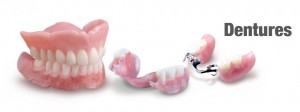 The dentures may feel loose while the muscles of your cheek and tongue learn to keep them in place. It is not unusual to experience minor irritation or soreness. You may find that saliva flow temporarily increases. As your mouth becomes accustomed to the dentures, these problems should go away. Follow-up appointments with the dentist are generally needed after a denture is inserted so the fit can be checked and adjusted. Even if you wear dentures, you still have to practice good dental hygiene. Brushing your gums, tongue and roof of your mouth every morning with a soft-bristled brush before wearing your dentures, stimulate circulation in your tissues and help remove plaque.
The dentures may feel loose while the muscles of your cheek and tongue learn to keep them in place. It is not unusual to experience minor irritation or soreness. You may find that saliva flow temporarily increases. As your mouth becomes accustomed to the dentures, these problems should go away. Follow-up appointments with the dentist are generally needed after a denture is inserted so the fit can be checked and adjusted. Even if you wear dentures, you still have to practice good dental hygiene. Brushing your gums, tongue and roof of your mouth every morning with a soft-bristled brush before wearing your dentures, stimulate circulation in your tissues and help remove plaque.
Bruxism
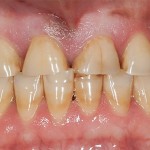 Bruxism is the excessive grinding of the teeth and/or excessive clenching of the jaw. It is an oral parafunctional activity, i.e., it is unrelated to normal function such as eating or talking. Bruxism is a common problem. There are two main types of bruxism: that which occurs during sleep (sleep bruxism) and that which occurs during wakefulness (awake bruxism). Dental damage may be similar in both types, but the symptoms of sleep bruxism tend to be worst on waking, and the symptoms of awake bruxism may not be present at all on waking, and then worsen over the day.The causes of bruxism are not completely understood, but probably involve multiple factors including stress. Bruxism may cause minimal symptoms, and therefore people may not be aware of the condition. Symptoms commonly associated with bruxism include hypersensitive teeth, aching jaw muscles, and headaches. Bruxism may cause tooth wear, and even damage or break teeth and dental restorations such as crowns and fillings. Treatment revolves around repairing the damage to teeth that has already occurred, and also night-guards to prevent further damage.
Bruxism is the excessive grinding of the teeth and/or excessive clenching of the jaw. It is an oral parafunctional activity, i.e., it is unrelated to normal function such as eating or talking. Bruxism is a common problem. There are two main types of bruxism: that which occurs during sleep (sleep bruxism) and that which occurs during wakefulness (awake bruxism). Dental damage may be similar in both types, but the symptoms of sleep bruxism tend to be worst on waking, and the symptoms of awake bruxism may not be present at all on waking, and then worsen over the day.The causes of bruxism are not completely understood, but probably involve multiple factors including stress. Bruxism may cause minimal symptoms, and therefore people may not be aware of the condition. Symptoms commonly associated with bruxism include hypersensitive teeth, aching jaw muscles, and headaches. Bruxism may cause tooth wear, and even damage or break teeth and dental restorations such as crowns and fillings. Treatment revolves around repairing the damage to teeth that has already occurred, and also night-guards to prevent further damage.



